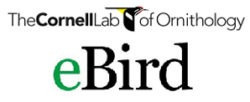Mammals of Vermont
| Common Name | Scientific Name | State Status | SGCN |
|---|---|---|---|
| Eastern Gray Squirrel | Sciurus carolinensis | S5 (Secure) | |
| Eastern Chipmunk | Tamias striatus | S5 (Secure) | |
| American Red Squirrel | Tamiasciurus hudsonicus | S5 (Secure) | |
| Northern Flying Squirrel | Glaucomys sabrinus | S4 (Apparently Secure) | Medium Priority |
| Southern Flying Squirrel | Glaucomys volans | S5 (Secure) | Medium Priority |
| Meadow Jumping Mouse | Zapus hudsonius | S5 (Secure) | |
| Woodland Jumping Mouse | Napaeozapus insignis | S5 (Secure) | |
| White-footed Deermouse | Peromyscus leucopus | S5 (Secure) | |
| North American Deermouse | Peromyscus maniculatus | S5 (Secure) | |
| Southern Red-backed Vole | Myodes gapperi | S5 (Secure) | |
| Rock Vole | Microtus chrotorrhinus | S2 (Imperiled) | High Priority |
| Eastern Meadow Vole | Microtus pennsylvanicus | S5 (Secure) | |
| Woodland Vole | Microtus pinetorum | S3 (Vulnerable) | High Priority |
| Northern Bog Lemming | Synaptomys borealis | SU (Unrankable, Lack of Information) | High Priority |
| Southern Bog Lemming | Synaptomys cooperi | S2 (Imperiled) | Medium Priority |
| Norway Rat | Rattus norvegicus | SNA (Non-Native) | |
| House Mouse | Mus musculus | SNA (Non-Native) | |
| Masked Shrew | Sorex cinereus | S5 (Secure) | Medium Priority |
| Long-tailed Shrew | Sorex dispar | S2 (Imperiled) | High Priority |
| Smoky Shrew | Sorex fumeus | S4 (Apparently Secure) | Medium Priority |
| American Pygmy Shrew | Sorex hoyi | S2 (Imperiled) | High Priority |
| American Water Shrew | Sorex palustris | S3 (Vulnerable) | High Priority |
| Northern Short-tailed Shrew | Blarina brevicauda | S5 (Secure) | |
| Hairy-tailed Mole | Parascalops breweri | S4 (Apparently Secure) | Medium Priority |
| Star-nosed Mole | Condylura cristata | S5 (Secure) | |
| Long-tailed Weasel | Mustela frenata | S3S4 | Medium Priority |
| Ermine | Mustela erminea | S5 (Secure) |
General References for Species Profiles
Integrated Taxonomic Information System
NatureServe Explorer: State and Global conservation ranks
2015 Vermont Wildlife Action Plan: Species of Greatest Conservation Need (SGCN)






